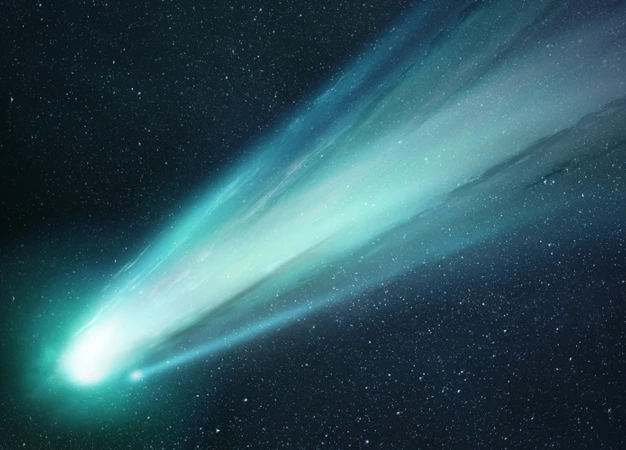Contents
- Formation of Comets
- Composition of Comets
- Types of Comets
- Orbit and Movement
- The Significance of Comets
- Comets in History
- Exploration of Comets
- Future Prospects
- Conclusion
-
Frequently Asked Questions
- 1. How do comets get their tails?
- 2. Are comets made of ice?
- 3. How are comets formed?
- 4. Do comets pose a threat to Earth?
- 5. How long do comets typically last?
- 6. Can comets be seen with the naked eye?
- 7. Are comets important for understanding the early solar system?
- 8. How fast do comets travel?
- 9. Have any spacecraft been sent to study comets?
- 10. Can comets contain organic molecules?
- References
-
Frequently Asked Questions
- 1. How are comets formed?
- 2. What is the composition of a comet?
- 3. What are the different types of comets?
- 4. How do comets move in space?
- 5. What can comets tell us about the early solar system?
- 6. Do comets contain water and organic molecules?
- 7. Can comets have an impact on Earth?
- 8. What is the historical significance of comets?
- 9. How have comets been explored by space missions?
- 10. What does the future hold for the study of comets?
- References
- Read More
Formation of Comets
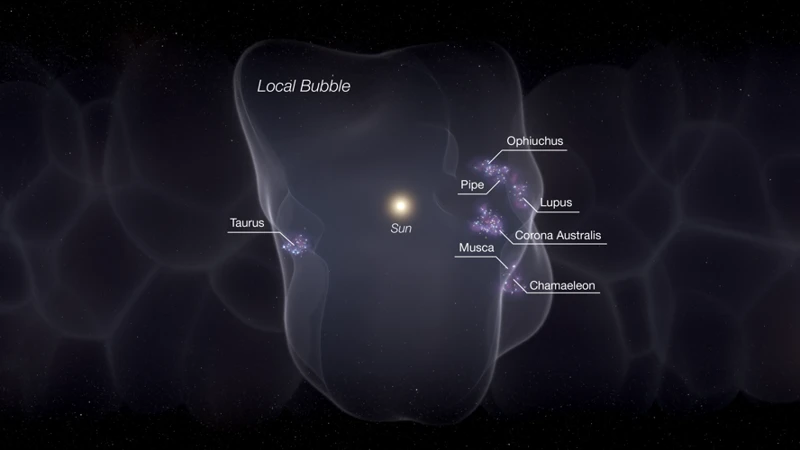
Comets are believed to originate from the outer regions of the solar system, specifically the Kuiper Belt and the Oort Cloud. The formation process begins with the accumulation of ices, such as water, carbon dioxide, methane, and ammonia, along with dust particles. These ices and dust grains come together to form a mass called the nucleus. The nucleus serves as the solid core of the comet. As the nucleus grows, it starts to develop a surrounding cloud of gas and dust called the coma. The coma is composed of volatile materials that are released as the comet gets closer to the sun, creating a glowing envelope that can extend over thousands of kilometers. Additionally, when the heat from the sun causes these volatile materials to vaporize, it forms a glowing tail that points away from the sun due to solar wind. This tail can be visible for millions of kilometers and is a characteristic feature of comets. The exact process of comet formation is still not fully understood, and scientists continue to study these celestial objects for valuable insights into the early stages of our solar system’s evolution.
Composition of Comets
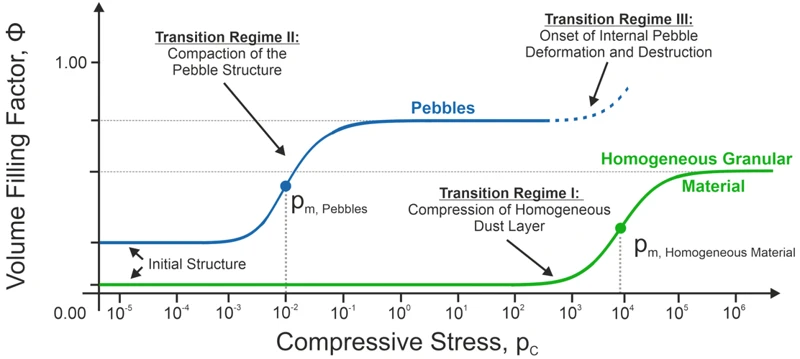
Comets are composed of a diverse array of materials, providing valuable insights into the composition of the early solar system. The main components of comets include a solid core called the nucleus, a glowing envelope known as the coma, and the spectacular tail that forms when volatiles vaporize. The nucleus is primarily made up of ices, such as water, carbon dioxide, methane, and ammonia, mixed with dust particles. These icy compounds are remnants of the primordial materials that existed during the formation of the solar system. The coma, on the other hand, consists of gas and dust released from the nucleus as it approaches the sun. The composition of the coma varies depending on the distance from the sun and the specific comet. Scientists analyze the coma to understand the chemical makeup of comets and gain insights into the building blocks of our solar system. By studying comets, we can unlock the secrets of our cosmic origins and gain a deeper understanding of the vast wonders of the universe.
1. Nucleus
The nucleus is the solid core of a comet and is considered the heart of these celestial objects. It is composed mainly of ice and dust particles. The size of a comet’s nucleus can vary greatly, ranging from a few meters to several kilometers in diameter. The nucleus is primarily made up of volatile ices, such as water ice, carbon dioxide, methane, and ammonia, along with rocky materials and organic compounds. These ices and compounds are remnants from the early stages of the solar system’s formation and can provide valuable insights into the chemical makeup of our early universe.
The nucleus is an irregularly shaped object that is often described as a dirty snowball. It is not a solid, compact mass but rather a loose collection of material held together by gravity. The gravity of the nucleus is relatively weak, which contributes to its porous and fragile structure. As a result, when a comet approaches the sun, the heat causes the volatile ices in the nucleus to vaporize and escape, creating the coma and tail that we observe.
Scientists study the nucleus of comets to gain a better understanding of the building blocks of our solar system and the processes that led to its formation. Analyzing the composition and structure of cometary nuclei can provide insights into the conditions present in the early solar system. By examining the isotopic ratios and organic molecules present in the nucleus, scientists can uncover clues about the origin of water and the building blocks of life on Earth.
Understanding the nucleus of comets also has implications for our understanding of other celestial objects, such as asteroids and planetary bodies. The study of cometary nuclei can help us understand the distribution and abundance of volatile materials in the outer regions of our solar system and beyond. This information can contribute to our knowledge of planetary formation and the evolution of other planetary systems.
Comets hold a special place in our exploration of the universe. As we continue to study and unravel the mysteries surrounding cometary nuclei, we gain valuable insights into the early stages of our solar system and the abundant possibilities that exist within the cosmos.
For more information about celestial objects and their influence, you can explore the fascinating topic of astrological houses and their influence on personality.
2. Coma
The coma is a fascinating component of comets, surrounding the nucleus and creating a hazy, glowing cloud. It consists of various gases and dust particles that are released as the comet approaches the sun and heats up. The composition of the coma varies depending on the specific elements present in the nucleus. The most abundant gas in the coma is typically water vapor (H2O), followed by carbon dioxide (CO2), and smaller amounts of methane (CH4) and ammonia (NH3). These gases are released through a process known as sublimation, where the solid ice directly transitions into gas without melting. The presence of these volatile compounds contributes to the comet’s iconic appearance as it nears the sun.
In addition to gases, the coma is also composed of microscopic dust particles. These particles are remnants from the early stages of the solar system’s formation and may contain complex organic molecules. The interaction between these particles and sunlight causes them to scatter light, producing the coma’s glowing appearance. The size and distribution of the dust particles within the coma can vary, ranging from fine grains to larger chunks. Observing and analyzing the composition of the coma can provide valuable insights into the chemical makeup of the comet and the early solar system.
It’s worth noting that as a comet moves closer to the sun, the heating and subsequent outgassing can lead to changes in the coma’s size and density. This dynamic nature of cometary comas makes them an intriguing subject of study for astronomers and planetary scientists. By studying the coma, scientists can gain a deeper understanding of the volatile materials present in comets, their roles in the formation of planetary systems, and their potential contributions to the development of life.
Types of Comets

There are several different types of comets that have been categorized based on their characteristics and origins. The first type is Jupiter Family Comets (JFCs). These comets have short orbital periods and are believed to originate from the Kuiper Belt or the scattered disk beyond the orbit of Neptune. JFCs are influenced by the gravity of Jupiter, which causes their orbits to become more circular and reside closer to the sun. The second type is Halley-type Comets, named after the famous Halley’s Comet. These comets have orbital periods ranging from 20 to 200 years and originate from the Kuiper Belt. They follow highly elliptical trajectories that take them close to the sun and then back out to the outer regions of the solar system. Finally, we have Long-Period Comets (LPCs) that typically have orbital periods of several centuries or even thousands of years. These comets are believed to originate from the Oort Cloud, a sphere of icy objects that surrounds the solar system. The Oort Cloud’s immense distance from the sun allows the LPCs to have long and highly eccentric orbits. The diversity of comet types offers valuable insights into the history and composition of our solar system, and studying these celestial wanderers continues to be an area of great interest for astronomers and scientists.
1. Jupiter Family Comets (JFCs)
Jupiter Family Comets (JFCs) are a specific group of comets that have short orbital periods and are influenced by the gravitational pull of Jupiter. JFCs originate from the Kuiper Belt, a region beyond the orbit of Neptune that contains a vast number of icy bodies. Over time, the gravitational influence of Jupiter causes some of these icy bodies to be perturbed and redirected towards the inner solar system. This gravitational interaction leads to their classification as Jupiter Family Comets. JFCs have orbital periods less than 20 years and tend to have orbits that are less inclined to the plane of the solar system compared to other comets. They are often found in the region between Mars and Jupiter, known as the Main Asteroid Belt. The most famous JFC is Comet Shoemaker-Levy 9, which captured global attention in 1994 when it made a close approach to Jupiter and subsequently broke apart and collided with the planet. Studying JFCs provides valuable information about the dynamics of the solar system, the influence of gravitational interactions, and the processes by which comets evolve and interact with planets. These comets play a crucial role in expanding our understanding of the early solar system and its formation.
2. Halley-type Comets
Halley-type comets, as the name suggests, refer to a specific group of comets that share similar characteristics to Halley’s Comet. These comets have orbital periods that range from 20 to 200 years and are classified as short-period comets. They are believed to originate from the Kuiper Belt, a vast region beyond Neptune filled with icy bodies. What makes Halley-type comets unique is their ability to return to the inner solar system on a regular basis due to their relatively short orbits.
Halley’s Comet itself is one of the most famous Halley-type comets. It has a period of approximately 76 years, meaning it completes one orbit around the Sun in that time frame. This comet last visited the inner solar system in 1986 and will make its next appearance in 2061. Other well-known Halley-type comets include Comet Encke, Comet Tempel 1, and Comet Hartley 2.
These comets offer a valuable opportunity for scientists to study their composition and behavior during each visit. By analyzing the gases and dust particles released by Halley-type comets, scientists gain insights into the volatile nature of these celestial bodies and how they evolve over time. Studying the orbit and characteristics of Halley-type comets also helps refine our understanding of the dynamics of the solar system and the gravitational interactions between celestial objects.
As our understanding of the solar system continues to deepen, the exploration and study of Halley-type comets provide valuable data for astronomers and researchers to piece together the puzzle of our cosmic neighborhood and its evolution.
Note: To learn more about the compatibility of zodiac modalities, you can read the article on Exploring Compatibility: Zodiac Modalities.
3. Long-Period Comets (LPCs)
Long-period comets (LPCs) are a fascinating category of comets that have highly elongated orbits, typically taking thousands or even millions of years to complete a single orbit around the Sun. Unlike Jupiter Family Comets (JFCs) and Halley-type comets, which have relatively short orbital periods and are confined to the inner regions of the solar system, LPCs originate from the farthest reaches of the Oort Cloud. These comets are believed to have been gravitationally perturbed by the gravitational influence of stars passing near the outer edges of our solar system. This interaction can disturb the comets’ orbits and send them hurtling towards the inner solar system. Due to their immense orbital periods, LPCs often approach the Sun from distant regions, making them appear exceptionally bright and spectacular during their rare and infrequent appearances. Their orbits can take them to great distances from the Sun, often extending beyond the orbit of Neptune. The most famous example of a long-period comet is Hale-Bopp, which made its closest approach to Earth in 1997 and was visible to the naked eye for a record-breaking 18 months. Studying long-period comets provides valuable insights into the outer reaches of our solar system and the dynamics of celestial bodies that have been preserved since the early days of its formation.
Orbit and Movement
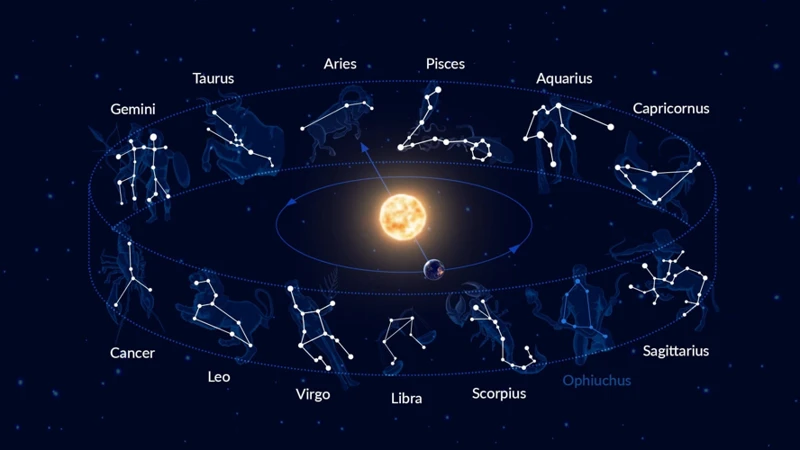
Comets follow elliptical orbits around the Sun, and their movement is governed by the gravitational forces exerted by the Sun and other celestial bodies. The shape and characteristics of a comet’s orbit depend on various factors, such as its initial velocity, the gravitational interactions with other planets, and potential encounters with other objects in space. The size and composition of the comet also influence its trajectory.
Cometary orbits can be broadly classified into two categories: short-period comets and long-period comets. Short-period comets have orbits that last less than 200 years and are primarily found in the inner regions of the solar system. They have relatively small orbital inclinations and are often associated with specific regions or families of comets, such as the Jupiter Family Comets (JFCs) or the Halley-type comets.
Long-period comets, on the other hand, have much larger orbital periods, lasting from several decades to thousands of years. These comets tend to have significantly larger inclinations, meaning their orbits are more inclined relative to the plane of the solar system. As a result, long-period comets can originate from any direction and can be found throughout the solar system.
A fascinating aspect of comet movement is their ability to change their orbits over time. This can occur due to close encounters with other celestial bodies or through the gravitational effects of the planets. Such encounters can either lead to the ejection of comets from the solar system or cause their orbits to become more elongated or inclined.
Studying the orbits and movement of comets provides valuable insights into the dynamics of the solar system and the conditions under which these cosmic wanderers were formed. Scientists can use this knowledge to trace the origins of comets, predict their future appearances, and understand the potential risks associated with cometary encounters with Earth.
The Significance of Comets
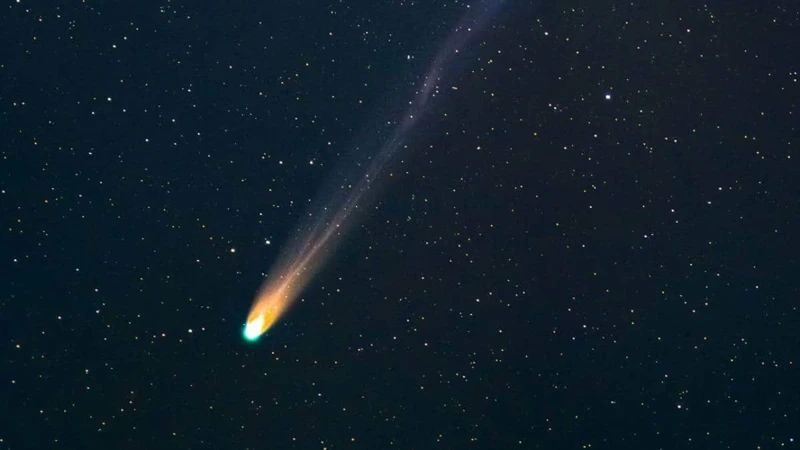
1. Early Solar System Insights: Comets are considered to be remnants from the early stages of the solar system’s formation, providing valuable clues about the conditions and processes that occurred billions of years ago.
2. Water and Organic Molecules: Comets are believed to contain a significant amount of water ice. The presence of water on comets suggests that they could have been a source of water on Earth and possibly contributed to the development of life by delivering organic molecules.
3. Impact on Earth: Comets have played a crucial role in the history of Earth. In the past, comets have collided with our planet, leading to significant changes in the environment and potentially influencing the evolution of life.
By studying comets and their properties, scientists can gain a deeper understanding of our cosmic origins and the conditions that allowed life to flourish on Earth.
Comets in History
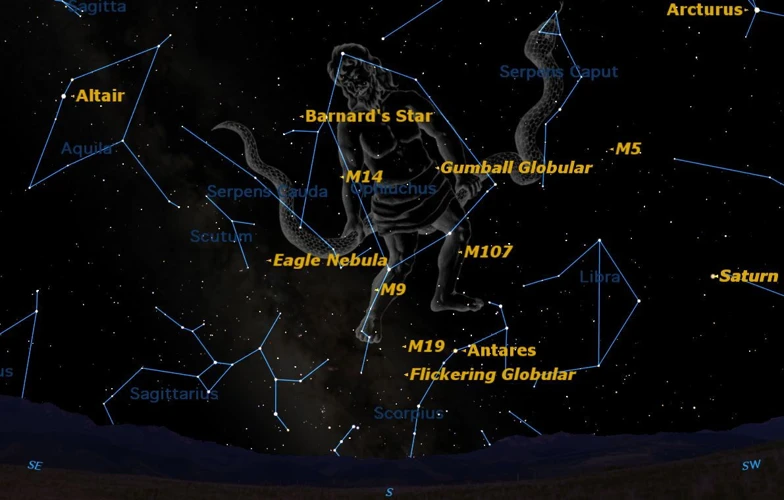
Throughout history, comets have sparked awe, wonder, and sometimes fear in cultures around the world. These celestial events were often seen as omens or signs of significant events on Earth. Here are some notable instances of comets in history:
1. Halley’s Comet: One of the most famous comets in history is Halley’s Comet, named after the English astronomer Edmond Halley. Halley accurately predicted the return of this comet, which appears once every 76 years. It has been observed and documented since ancient times, with records dating back to the Babylonians, Chinese, and Greeks. Its appearances have been associated with various historical events, including the Battle of Hastings in 1066 and the birth and death of notable figures like Mark Twain and Winston Churchill.
2. Comet of 44 BC: In ancient Rome, the appearance of a comet in the year 44 BC was believed to be a sign of the deification of Julius Caesar after his assassination. The Romans saw this event as an indication of a new era and even minted coins featuring the image of a comet.
3. The Great Comet of 1811: This magnificent comet, also known as Comet Flaugergues, was visible for several months with a bright and distinct tail. Its appearance coincided with the birth of many great composers, including Franz Liszt and Richard Wagner. It left a lasting impact on popular culture, inspiring artworks, poetry, and scientific studies.
4. Comet Hale-Bopp: In 1997, Comet Hale-Bopp captured worldwide attention as one of the brightest comets of the 20th century. It could be seen with the naked eye for a record-breaking 18 months. The comet’s spectacular display led to a surge in public interest and an increase in scientific observations.
Throughout history, comets have shaped our understanding of the cosmos and influenced cultural beliefs. While these celestial events were once viewed with superstition and fear, today we have a deeper scientific understanding of comets and their significance in our solar system’s history.
Exploration of Comets
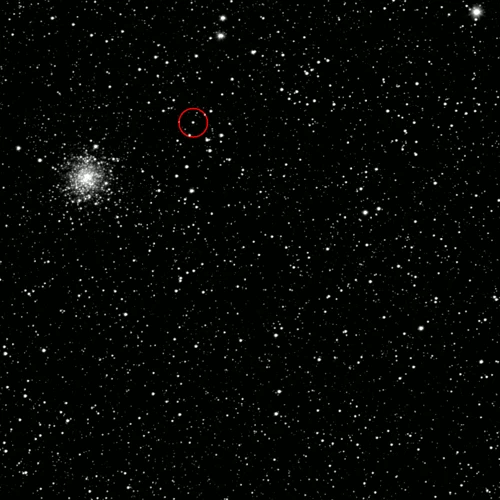
Exploring comets is a challenging and exciting endeavor that has provided us with valuable information about these celestial bodies. Over the years, various missions have been launched to study comets up close and gather data that can help us understand their composition and behavior. One of the landmark missions in comet exploration is the European Space Agency’s Rosetta mission, which successfully rendezvoused with Comet 67P/Churyumov-Gerasimenko in 2014. The mission included a lander called Philae, which made a historic touchdown on the comet’s surface, providing crucial insights into its structure and composition. Another notable mission is NASA’s Stardust mission, which collected samples from the coma of Comet Wild 2 and returned them to Earth for analysis. This mission provided scientists with direct access to cometary material, offering valuable clues about the formation and evolution of comets. Additionally, the NASA Deep Impact mission deliberately crashed a probe into Comet Tempel 1, creating a crater and allowing scientists to study the interior composition of the comet. These missions, along with others like the Japanese Hayabusa and Hayabusa2 missions, have significantly expanded our knowledge of comets and their role in the early solar system. The exploration of comets continues to be an active area of research, with future missions being planned to visit and study even more comets up close, providing us with further insights into the mysteries of these fascinating objects.
Future Prospects

The study of comets and their significance in understanding the early solar system is an ongoing endeavor with exciting prospects for the future. Here are some key areas where future research and exploration are expected to make significant contributions:
- Advancements in Space Missions: Technology continues to progress, enabling more sophisticated space missions to be launched. These missions can be specifically designed to target comets, providing us with even more detailed data about their composition, structure, and behavior.
- Sample Return Missions: One of the most anticipated future prospects is the possibility of sample return missions from comets. By collecting samples directly from a comet’s nucleus or coma, scientists can conduct in-depth analyses and experiments in laboratories on Earth, further enhancing our understanding of these intriguing celestial objects.
- Improved Instrumentation: Advancements in sensor technologies and telescopes will provide scientists with enhanced capabilities to observe and study comets. High-resolution imaging, spectroscopy, and remote sensing techniques can help to unravel the mysteries surrounding the formation and evolution of comets.
- Interstellar Comet Exploration: In recent years, we have witnessed the exciting discovery of interstellar objects, such as ‘Oumuamua and 2I/Borisov, passing through our solar system. The future holds the potential for more interstellar objects to be discovered, offering unique opportunities to study comets from outside our own solar system.
With these future prospects, we can expect a greater understanding of the origins of comets, their role in the formation of the solar system, and their impact on terrestrial bodies like Earth. The continuous exploration and study of comets will undoubtedly provide us with valuable insights into the mysteries of our cosmic neighborhood and the broader universe.
Conclusion

Frequently Asked Questions

1. How do comets get their tails?
Comets develop tails as they approach the sun. The heat from the sun causes the volatile materials within the comet, such as water and gases, to vaporize. As these gases escape, they drag debris and dust along, creating a glowing tail that points away from the sun due to the solar wind.
2. Are comets made of ice?
Yes, comets are composed primarily of ice. The icy nucleus of a comet contains various frozen gases, including water, carbon dioxide, methane, and ammonia, along with dust particles. When a comet approaches the sun, the heat causes these ices to vaporize and form a glowing cloud around the nucleus.
3. How are comets formed?
Comets are thought to form in the outer regions of the solar system. They are believed to originate from two main locations: the Kuiper Belt and the Oort Cloud. These regions contain a significant amount of icy materials and dust particles, which gradually come together to form the nucleus of a comet.
4. Do comets pose a threat to Earth?
While the majority of comets pose no direct threat to Earth, there is a small possibility of a significant impact. However, scientists actively monitor and study comets, and our understanding of their orbits allows for early identification of any potential threats.
5. How long do comets typically last?
The lifespan of a comet can vary. Some comets with larger nuclei and more volatile materials may last for thousands or even millions of years. However, as comets approach the sun and their volatiles are depleted, they gradually disintegrate and lose their characteristic features.
6. Can comets be seen with the naked eye?
Yes, some comets can be seen with the naked eye, depending on their size, composition, and proximity to Earth. Occasionally, comets make close passes by our planet, giving stargazers and astronomers the opportunity to observe them without the need for telescopes.
7. Are comets important for understanding the early solar system?
Yes, comets play a crucial role in understanding the early solar system. They are believed to be remnants from the early stages of our planetary system’s formation, containing ancient material that has been preserved for billions of years. Studying comets provides valuable insights into the origins and composition of our solar system.
8. How fast do comets travel?
The speed of comets can vary depending on their proximity to the sun. On average, comets travel at speeds ranging from 10 to 70 kilometers per second (6 to 43 miles per second). However, as they approach the sun, the heat and gravitational forces can accelerate their velocity.
9. Have any spacecraft been sent to study comets?
Yes, several spacecraft have been sent to study comets up close. Examples include the Giotto mission, which flew by Halley’s Comet in 1986, and the Rosetta mission, which orbited Comet 67P/Churyumov-Gerasimenko from 2014 to 2016. These missions provided valuable data and images, revolutionizing our understanding of comets.
10. Can comets contain organic molecules?
Yes, comets have been found to contain organic molecules. These molecules include complex carbon-based compounds, which are essential building blocks for life. The presence of organic molecules on comets raises intriguing questions about the potential for comets to have played a role in the origin of life on Earth.
References
- Comet Wild 2: A window into the birth of the solar system?
- Comets: Natures Cosmic Quandaries
- ‘Hyperactive’ Comet K2 Carries Clues to Birth of Solar System
Frequently Asked Questions

1. How are comets formed?
Comets are formed in the outer regions of the solar system, beyond the orbit of Neptune. They are thought to be remnants from the early stages of the solar system’s formation, composed mostly of ice, dust, and organic compounds.
2. What is the composition of a comet?
A comet consists of three main components: the nucleus, coma, and tail. The nucleus is primarily made up of ice and rock, the coma is a cloud of gas and dust surrounding the nucleus, and the tail is formed by the interaction of solar radiation with the coma.
3. What are the different types of comets?
There are three main types of comets: Jupiter Family Comets (JFCs), Halley-type Comets, and Long-Period Comets (LPCs). Each type has its distinct characteristics and orbital paths.
4. How do comets move in space?
Comets move in elliptical orbits around the Sun. Their movement is influenced by the gravitational pull of the Sun and other celestial bodies in the solar system.
5. What can comets tell us about the early solar system?
Comets provide valuable insights into the early solar system as they have remained relatively unchanged since their formation. By studying their composition and structure, scientists can learn more about the conditions and processes that existed during the formation of the solar system.
6. Do comets contain water and organic molecules?
Yes, comets contain significant amounts of water and organic molecules, including amino acids and simple sugars. These findings suggest that comets may have played a role in delivering essential ingredients for life to Earth.
7. Can comets have an impact on Earth?
While the chance of a comet directly hitting Earth is low, comets can have an impact on our planet. The interaction of a comet’s tail with Earth’s atmosphere can result in meteor showers, and in rare cases, a large comet impact could have significant consequences.
8. What is the historical significance of comets?
Throughout history, comets have been regarded as significant celestial events. They have been associated with various myths, religious beliefs, and superstitions. The study of comets has also contributed to our understanding of astronomy and the nature of the universe.
9. How have comets been explored by space missions?
Several space missions, such as NASA’s Stardust and ESA’s Rosetta, have been dedicated to exploring comets. These missions involved sending spacecraft to rendezvous with comets, study their composition, and even land on their nuclei to gather samples.
10. What does the future hold for the study of comets?
With advancements in technology and space exploration, the future holds exciting prospects for studying comets. Planned missions aim to further enhance our understanding of comets and their role in the formation of the solar system, potentially uncovering new insights into the origins of life.

